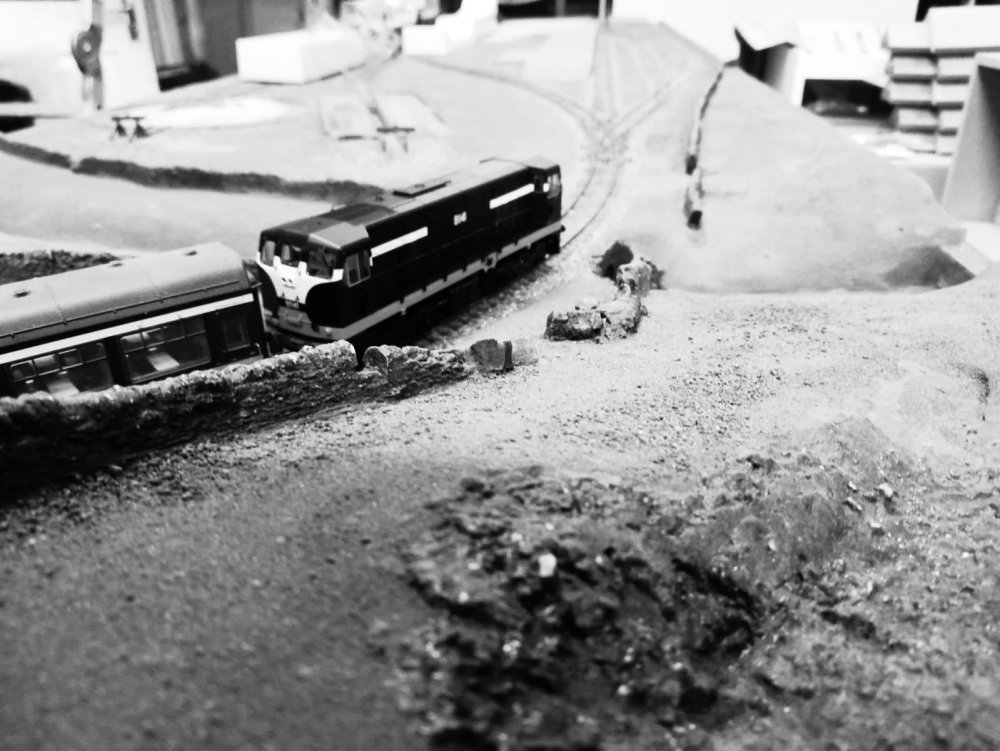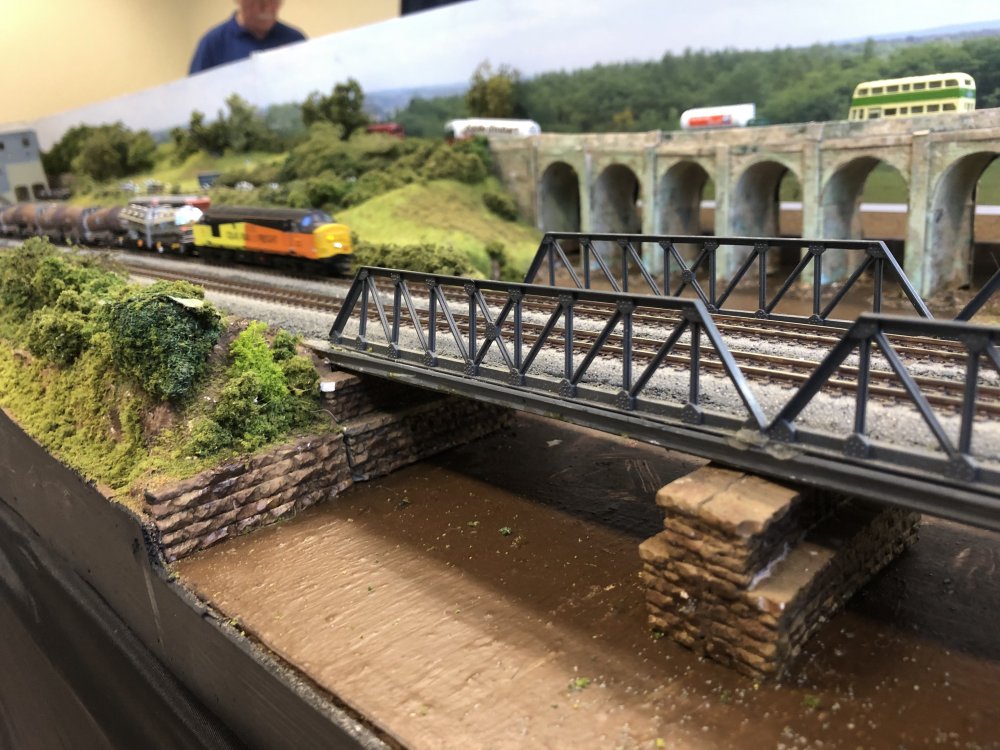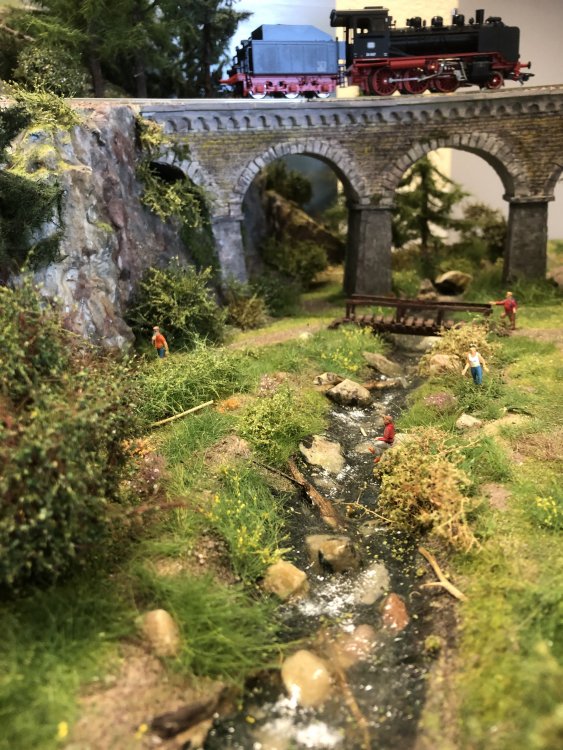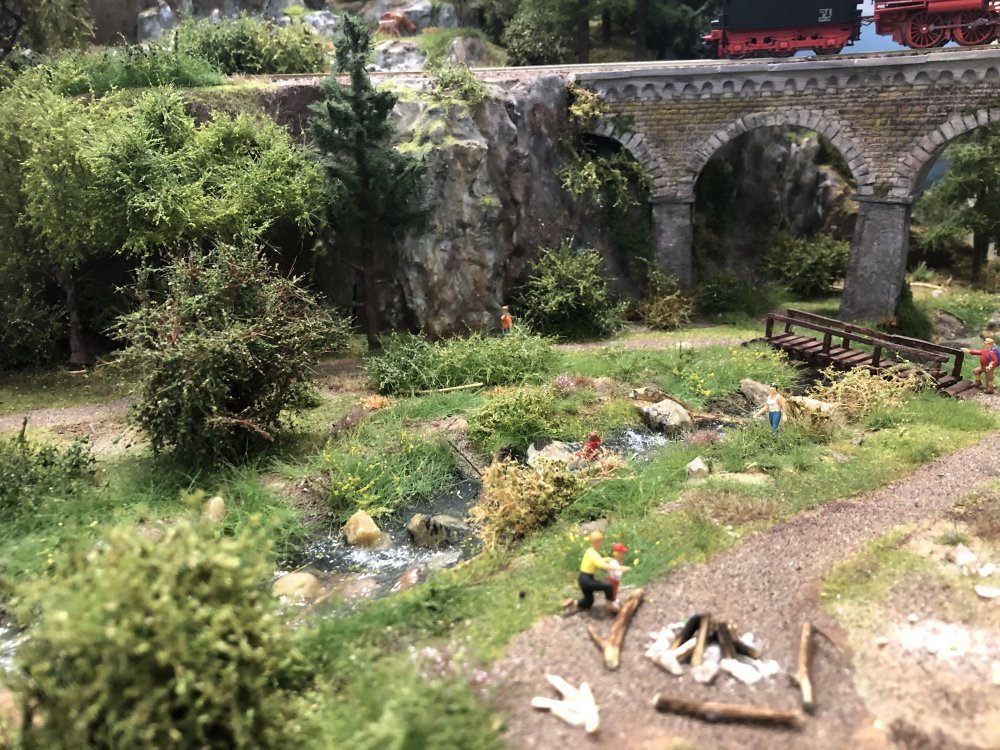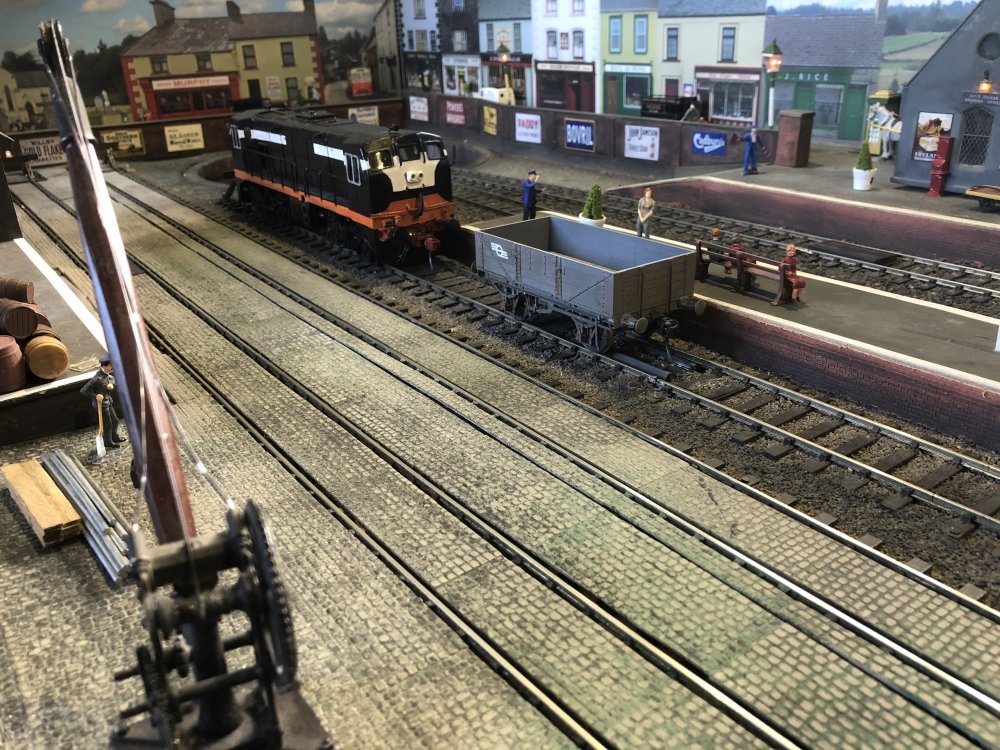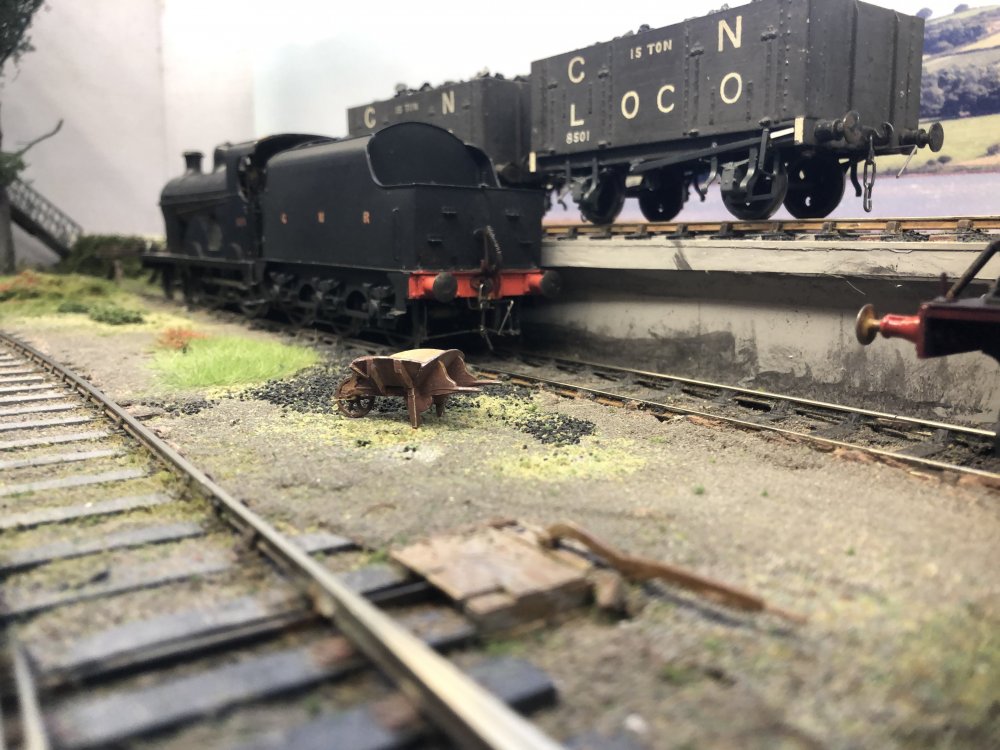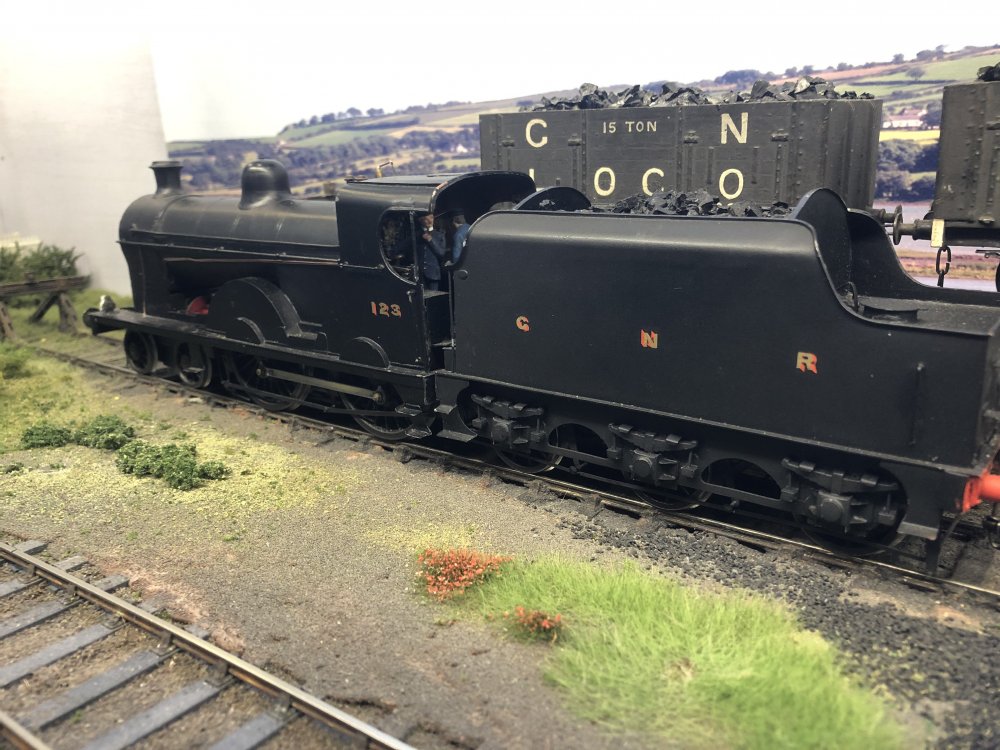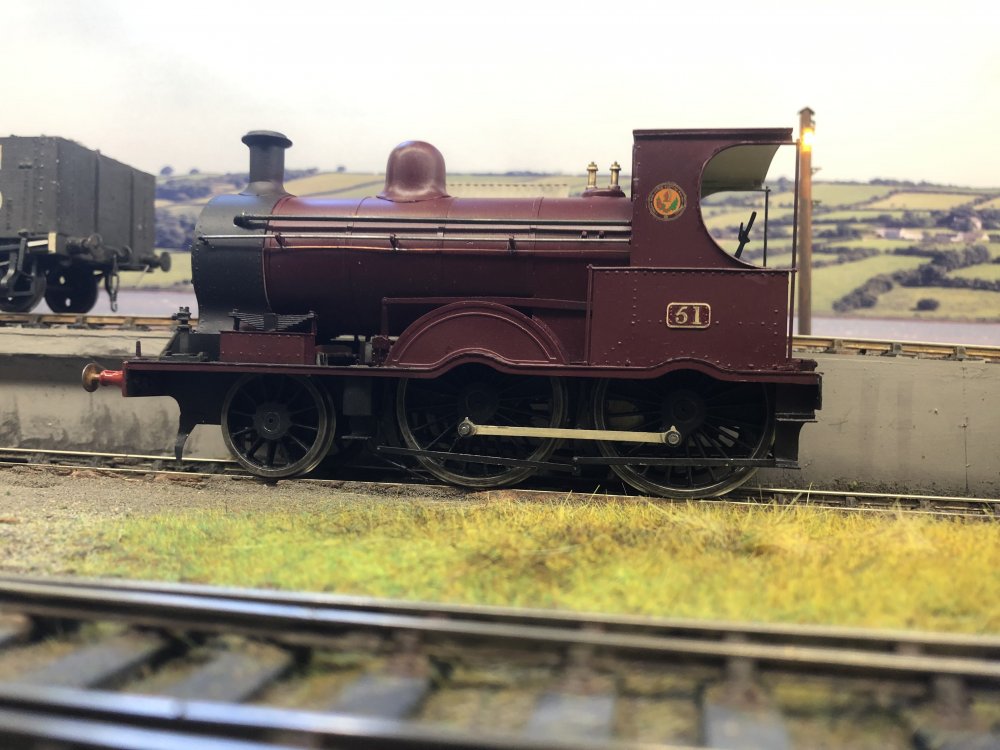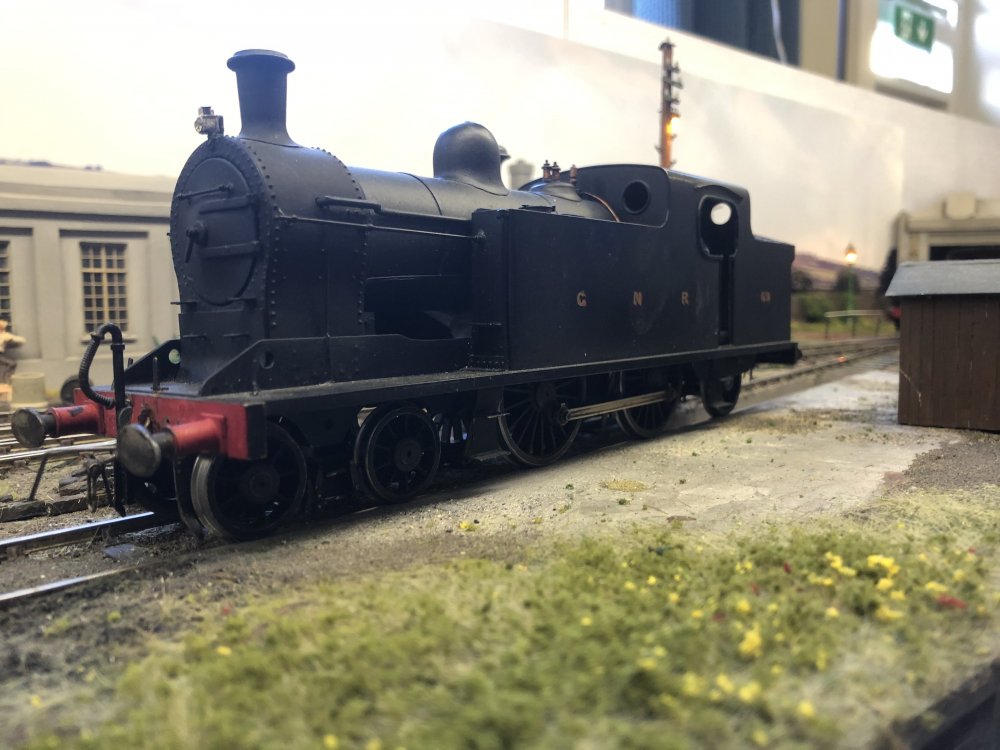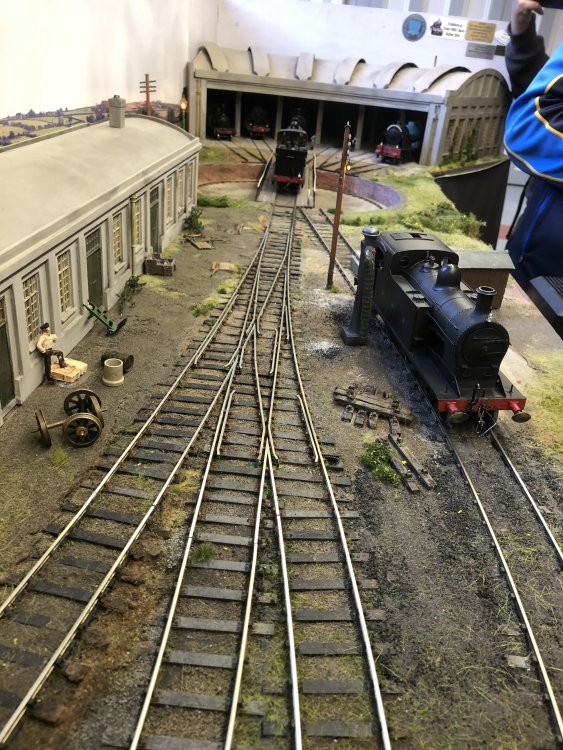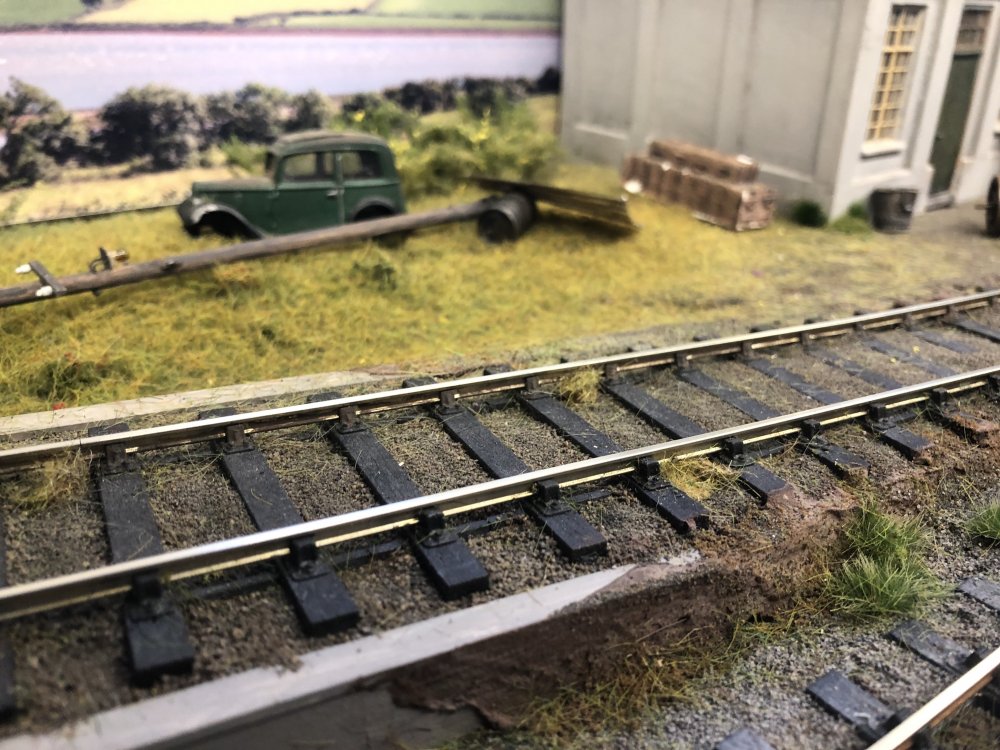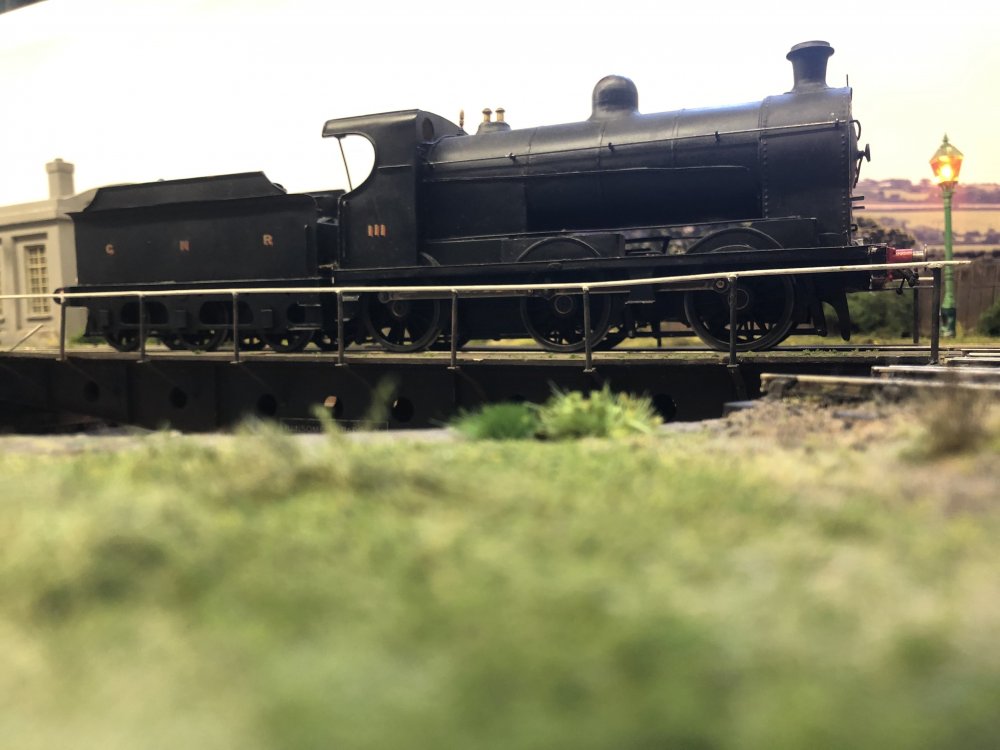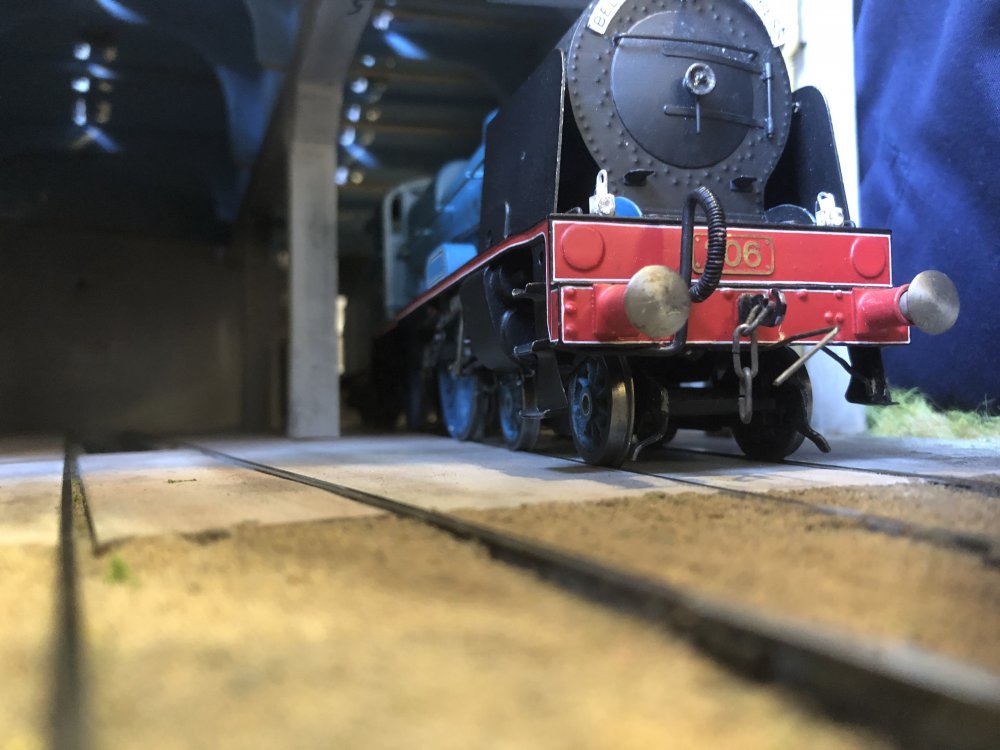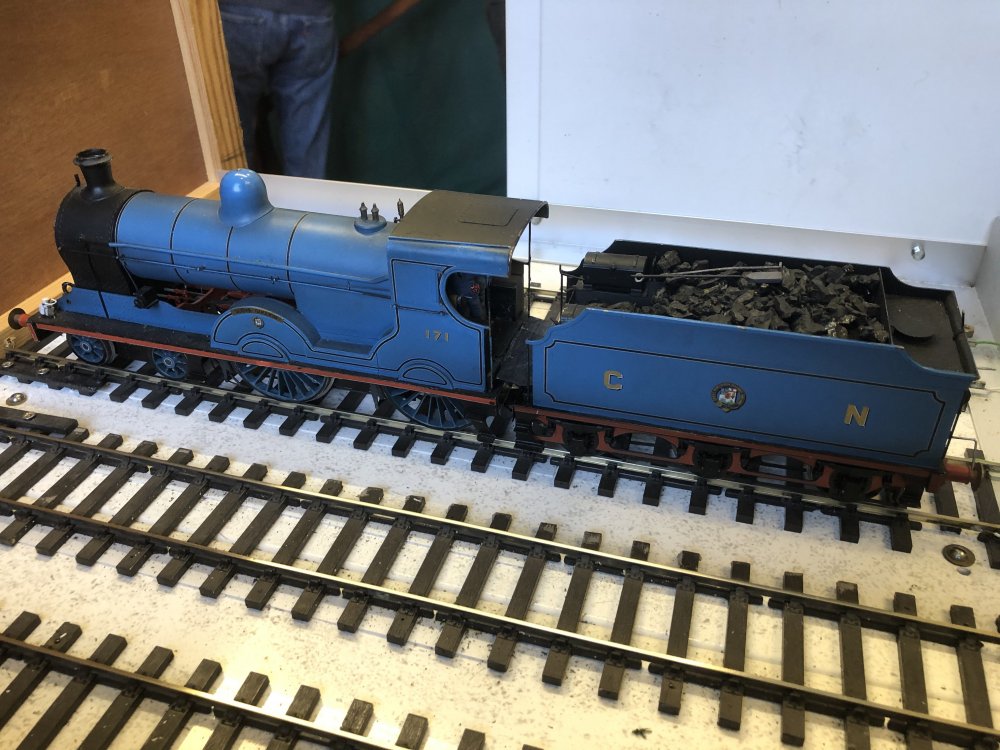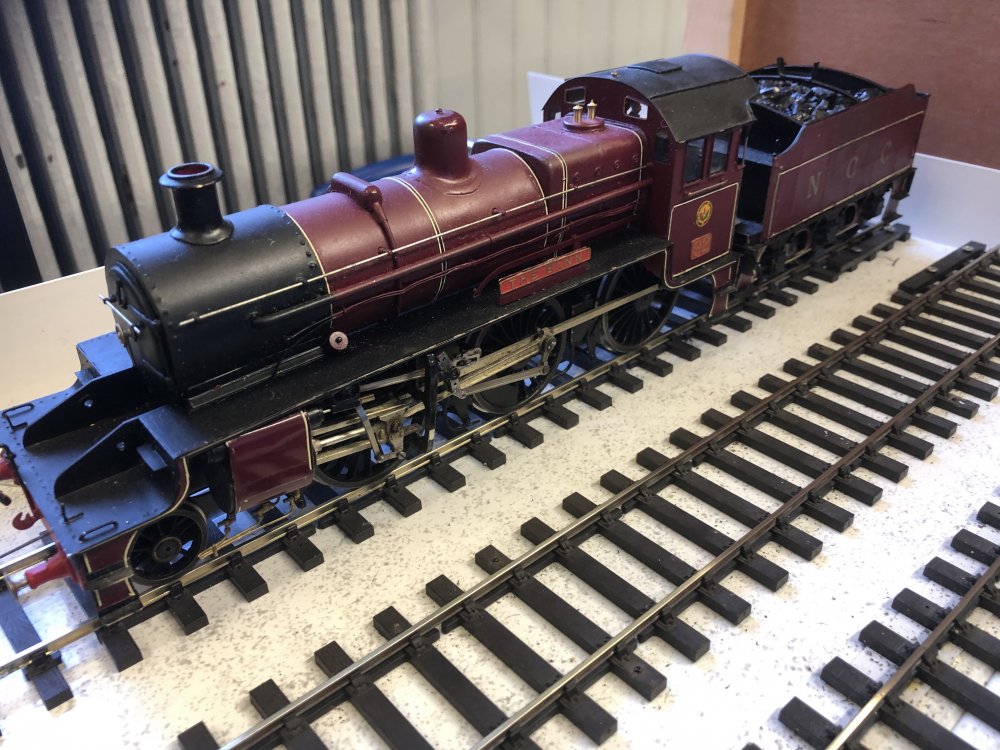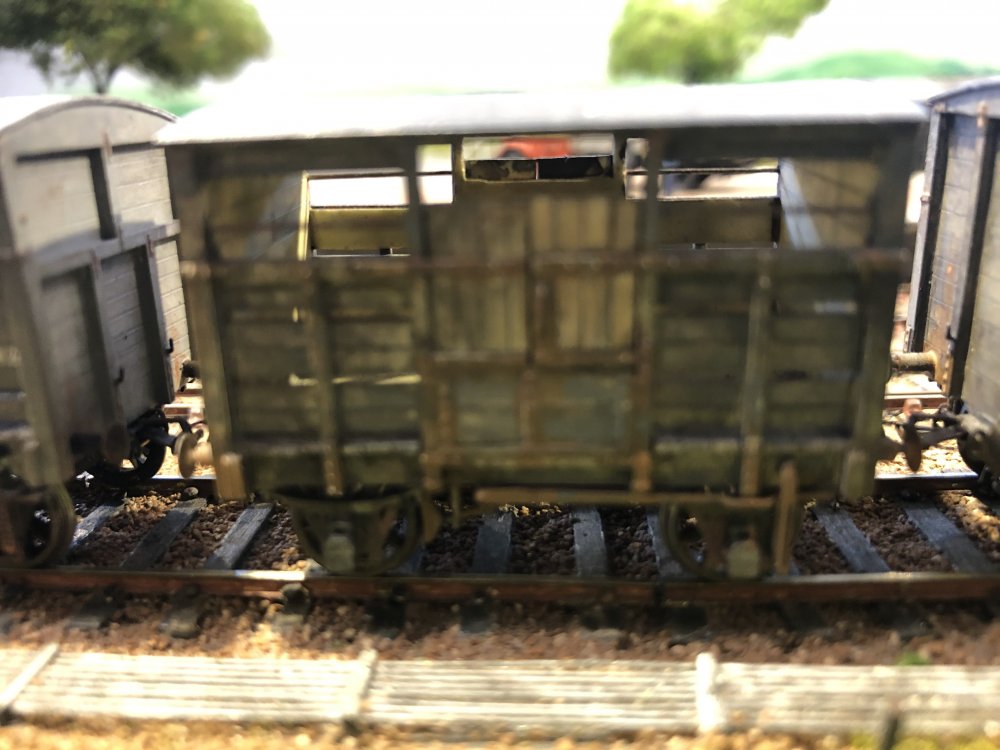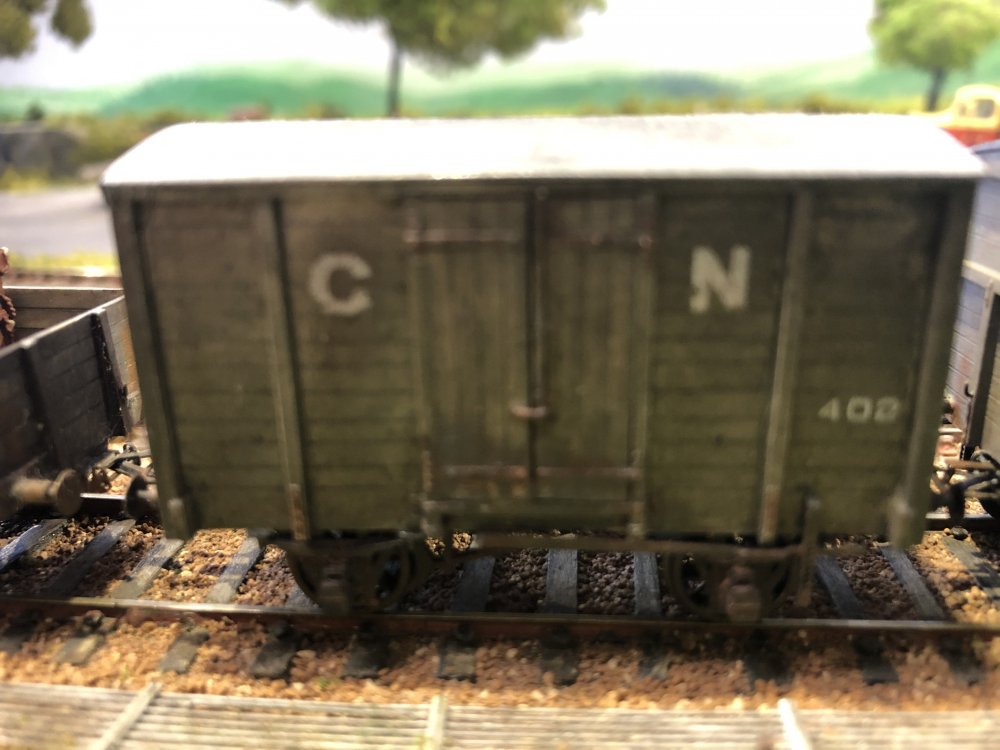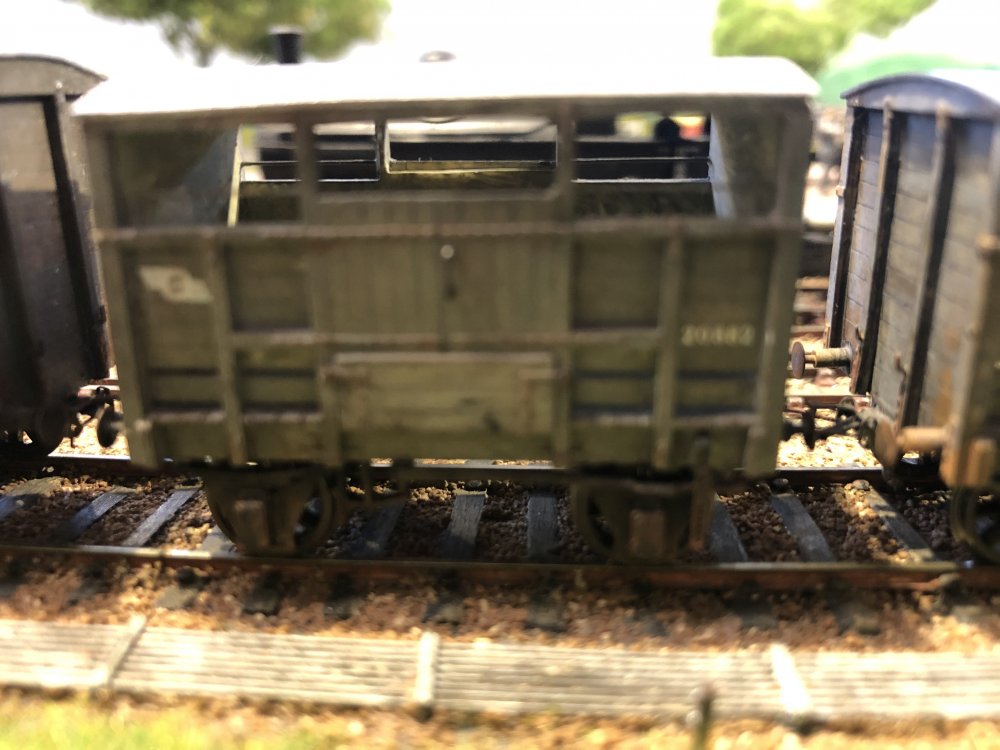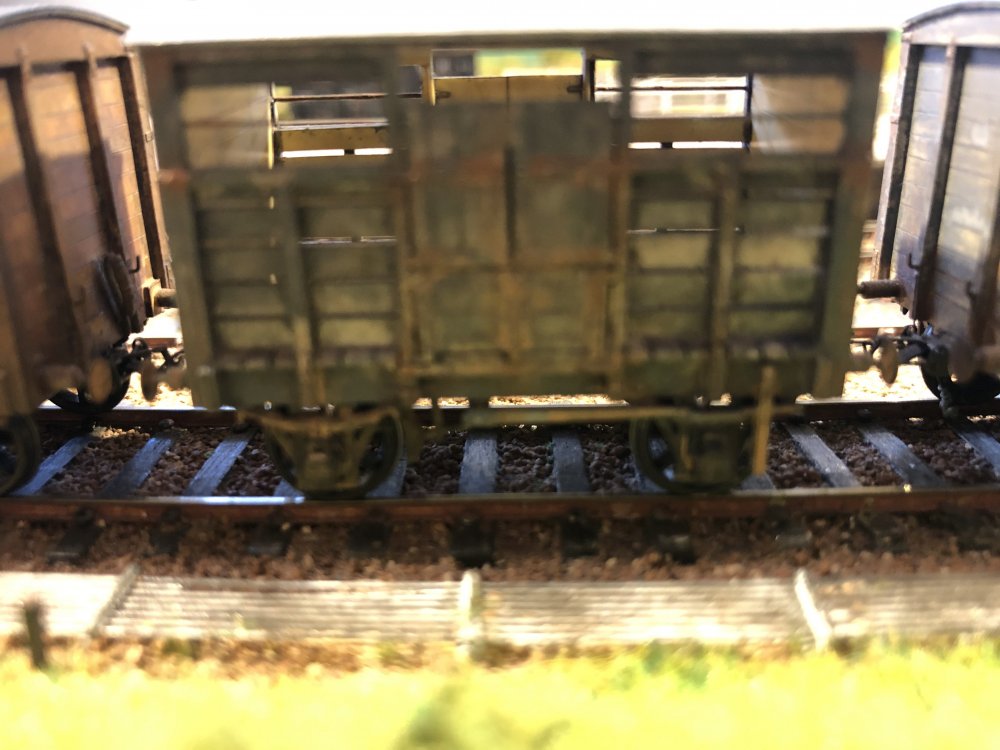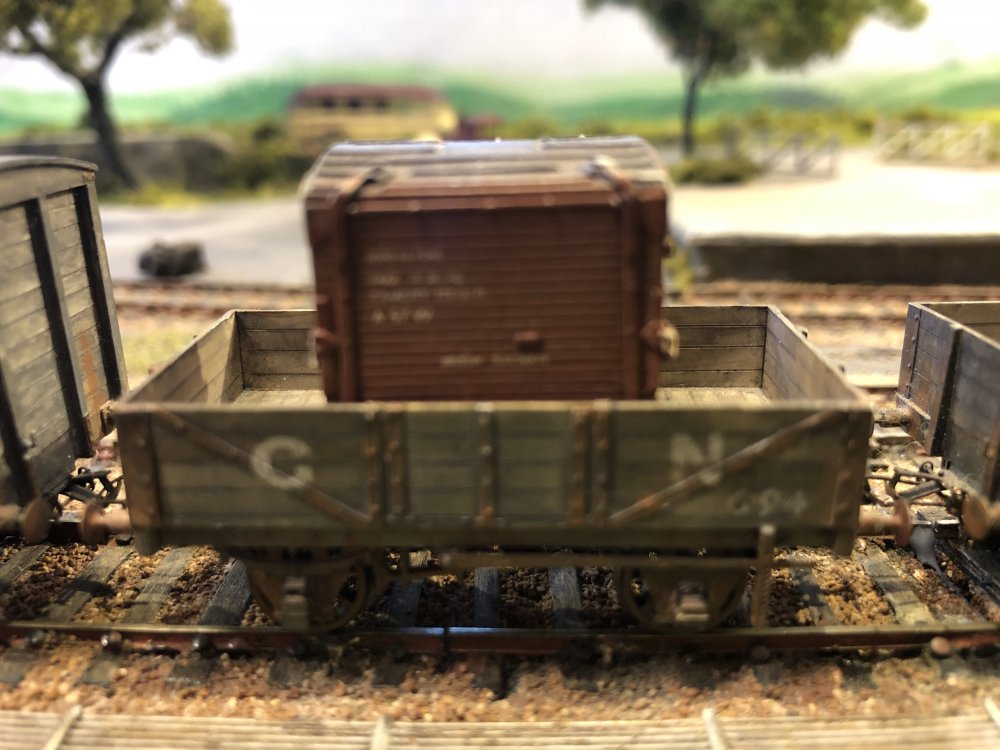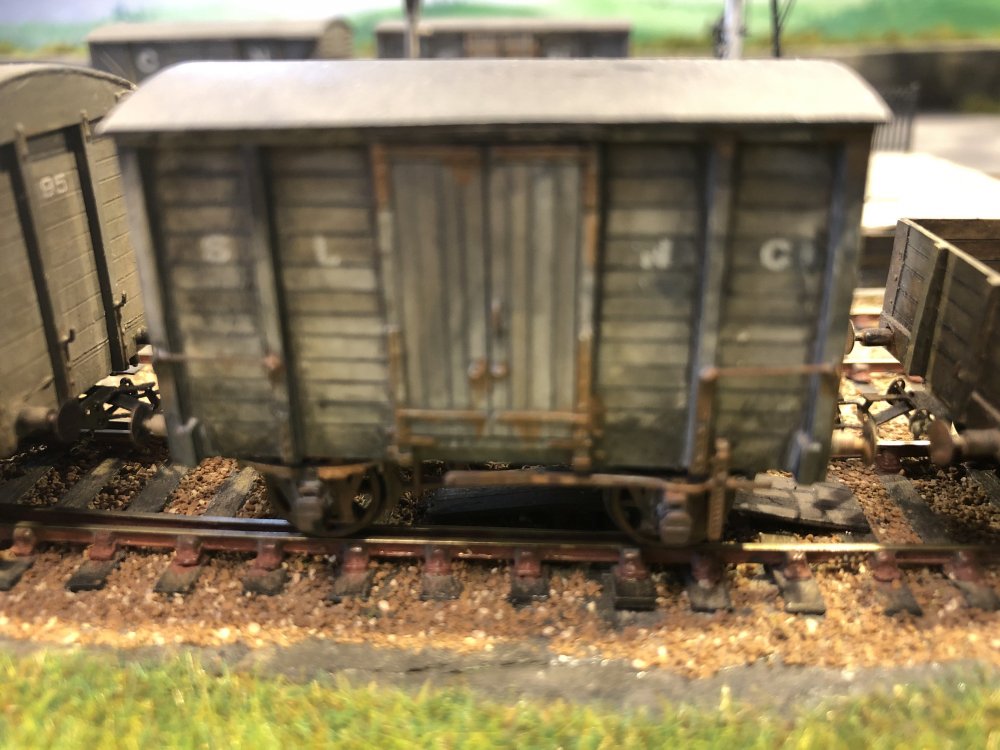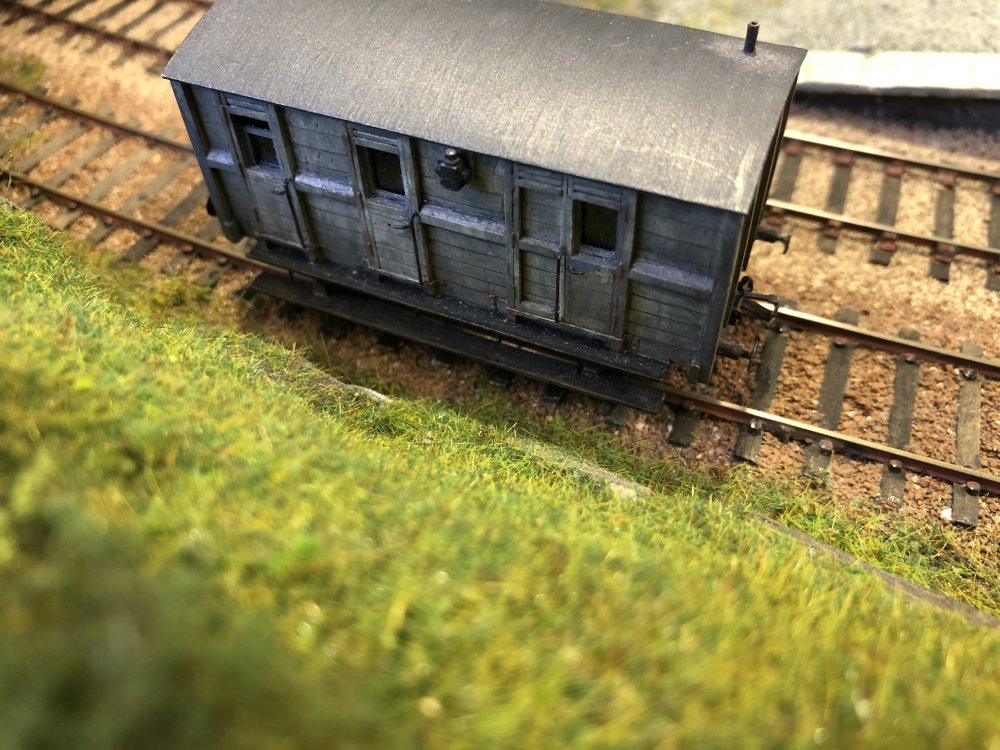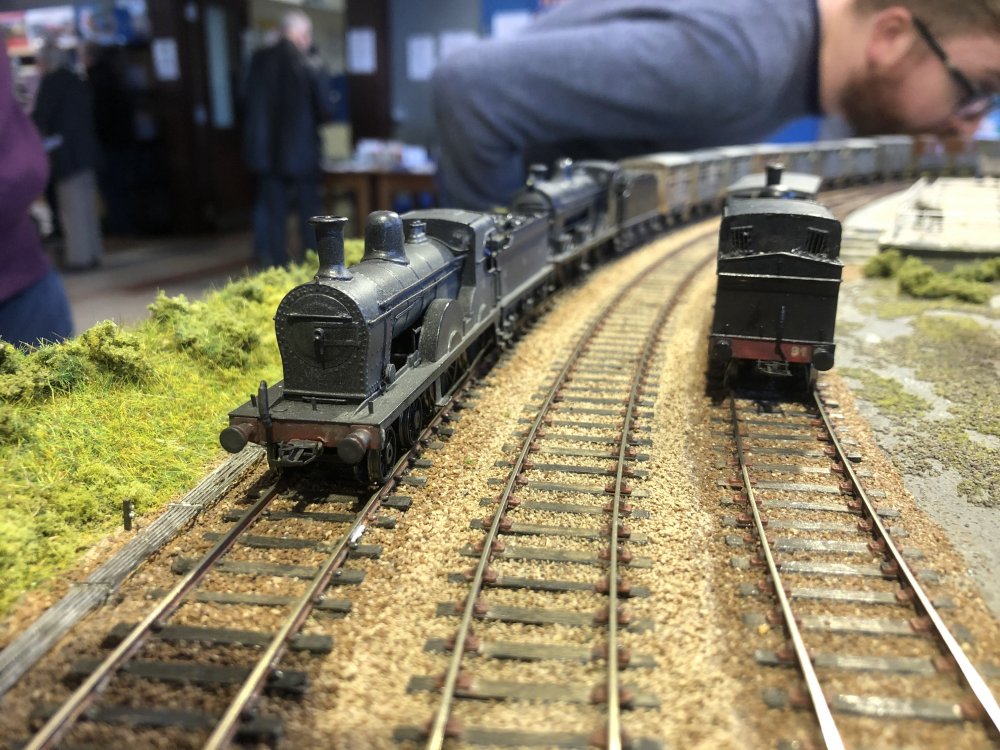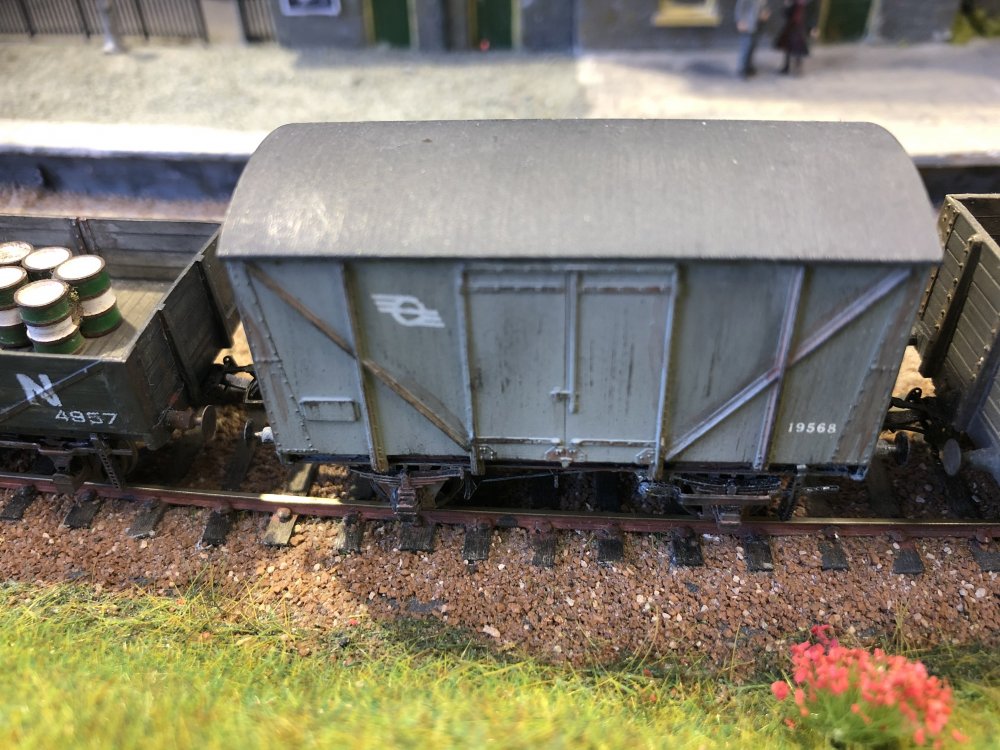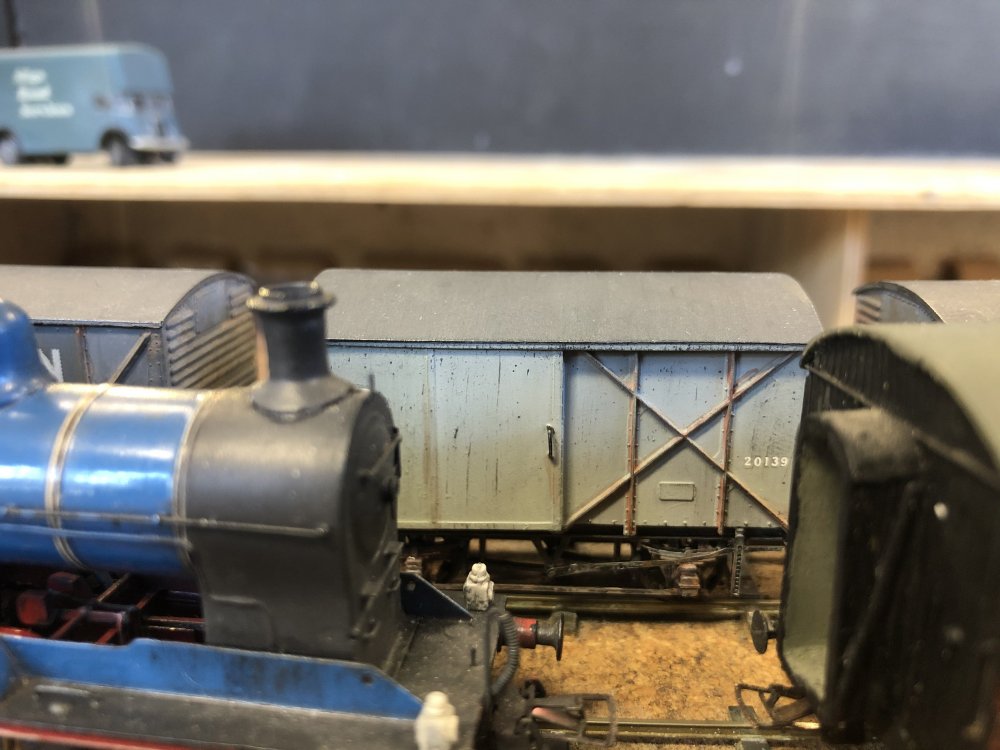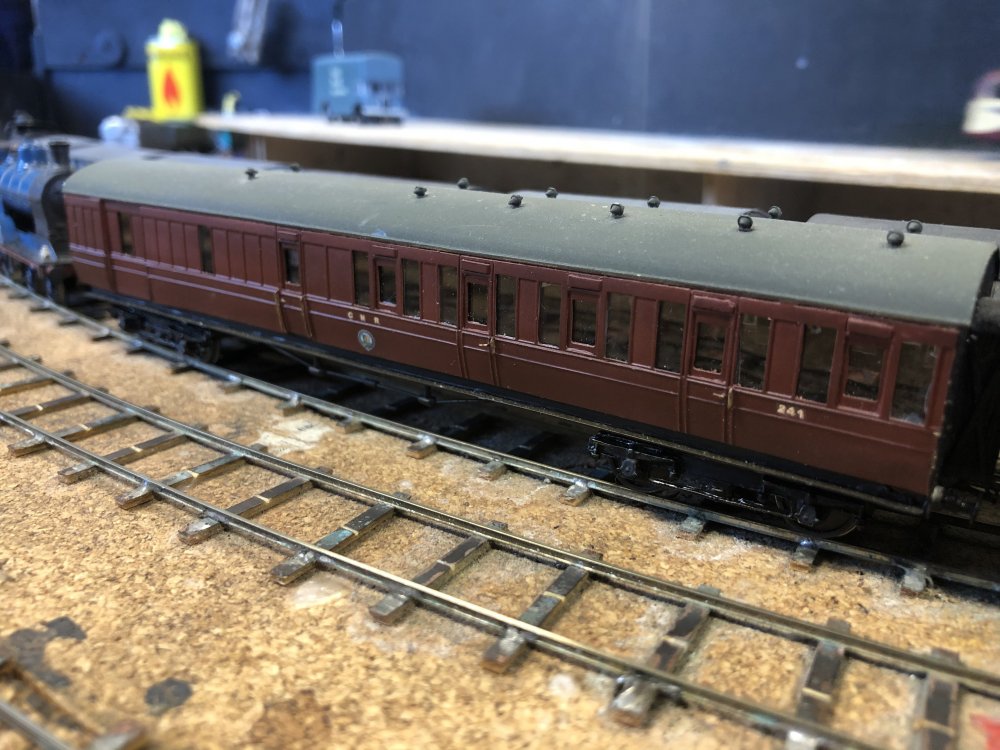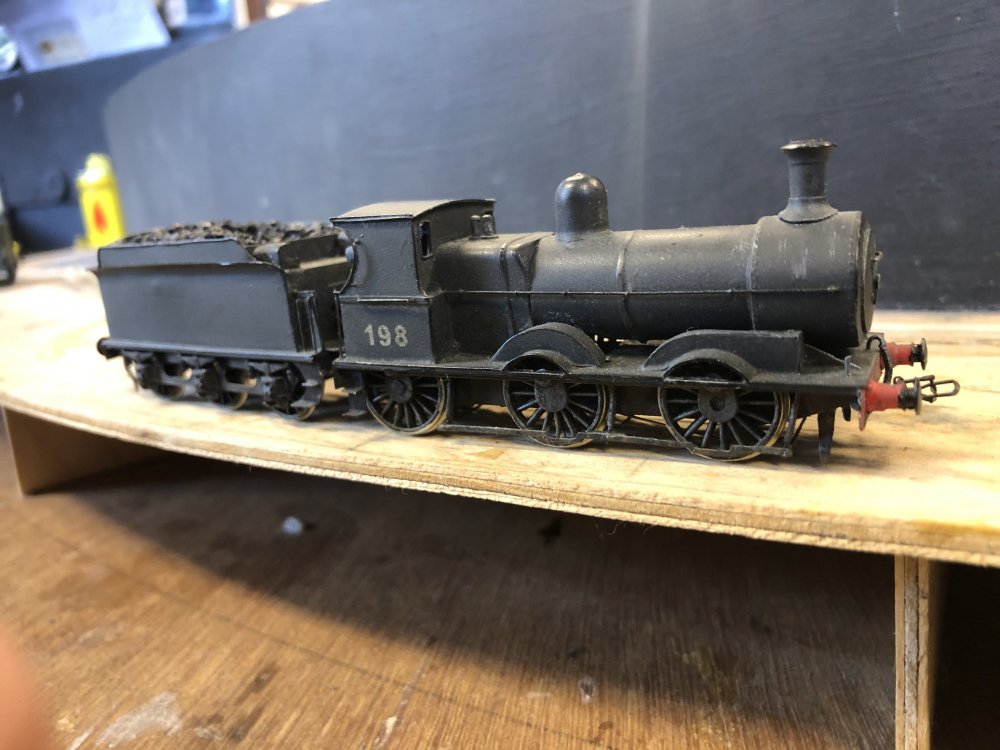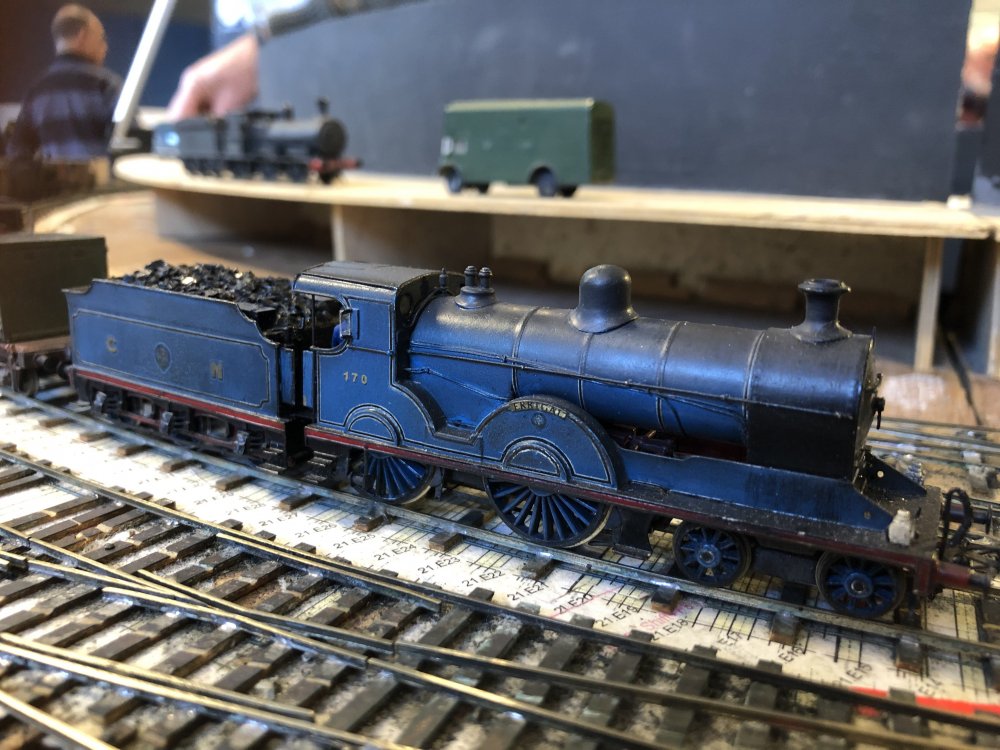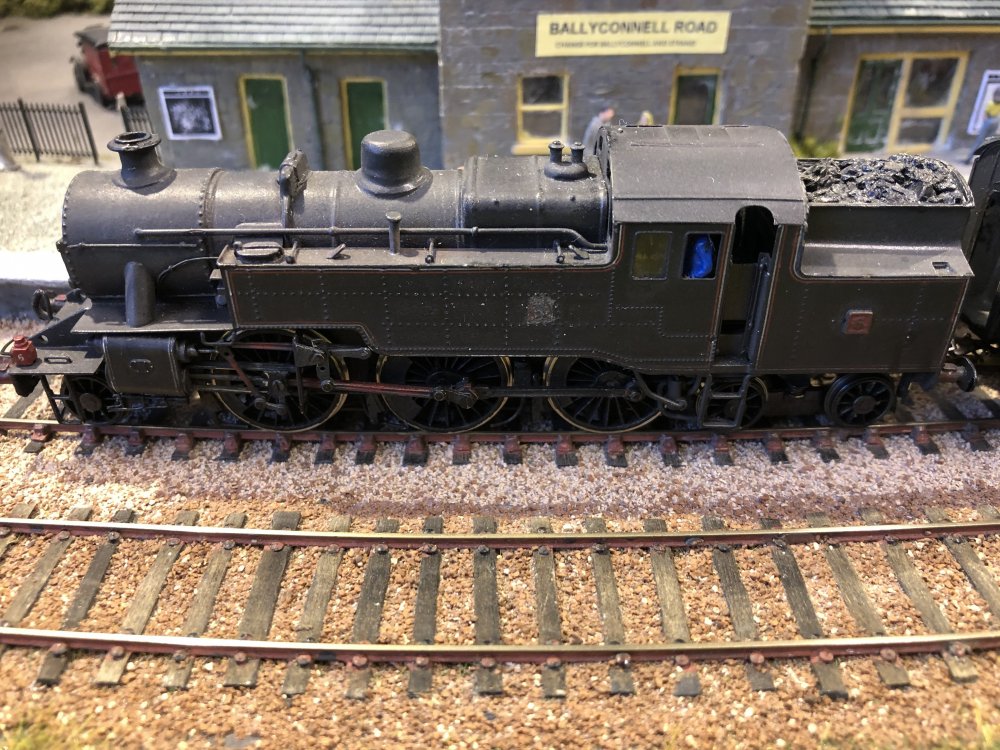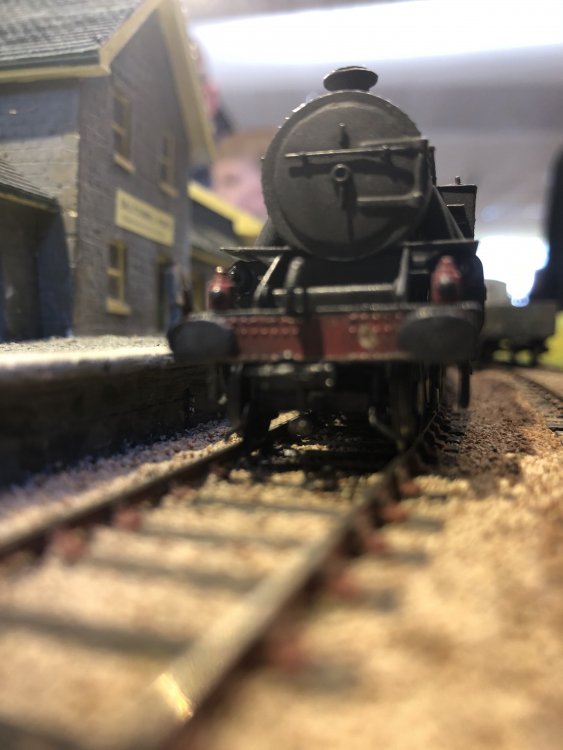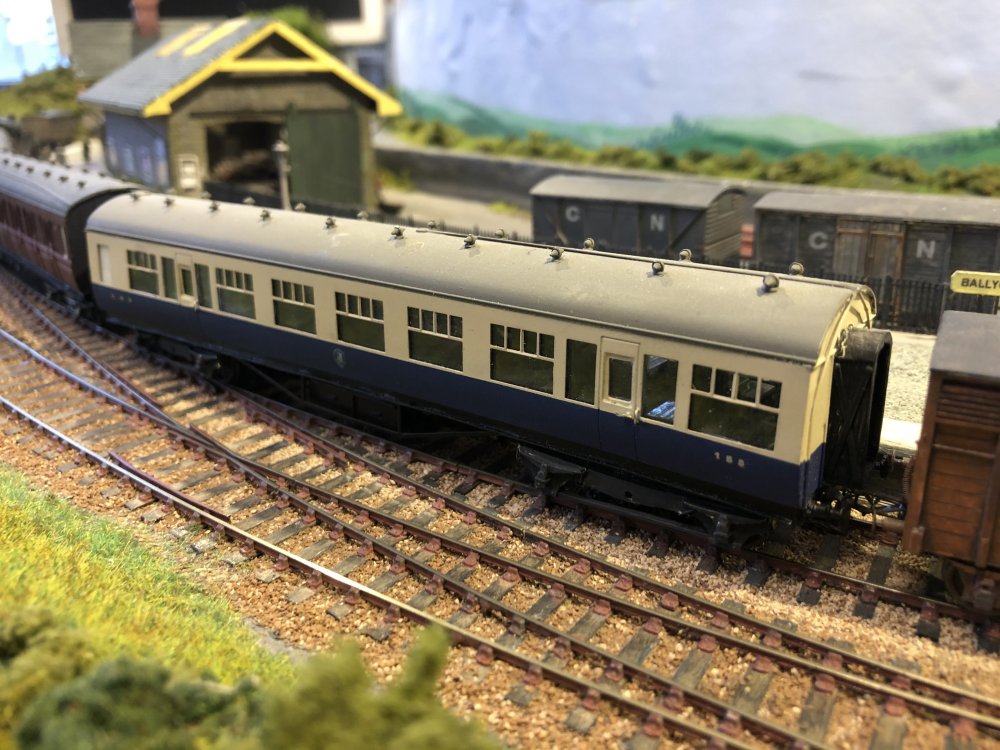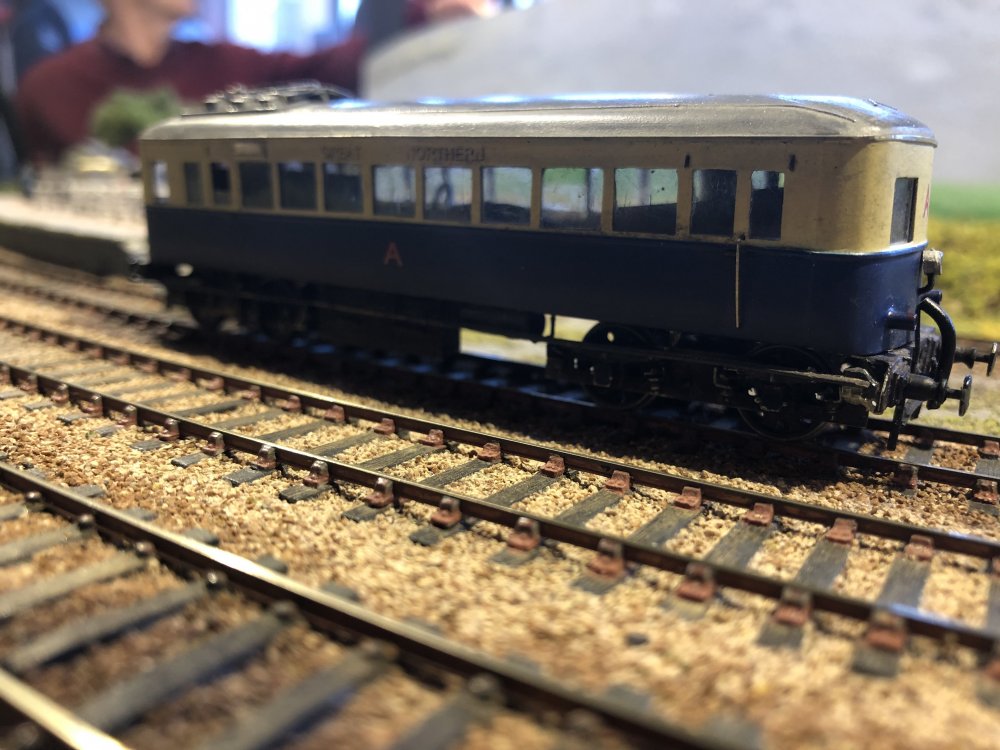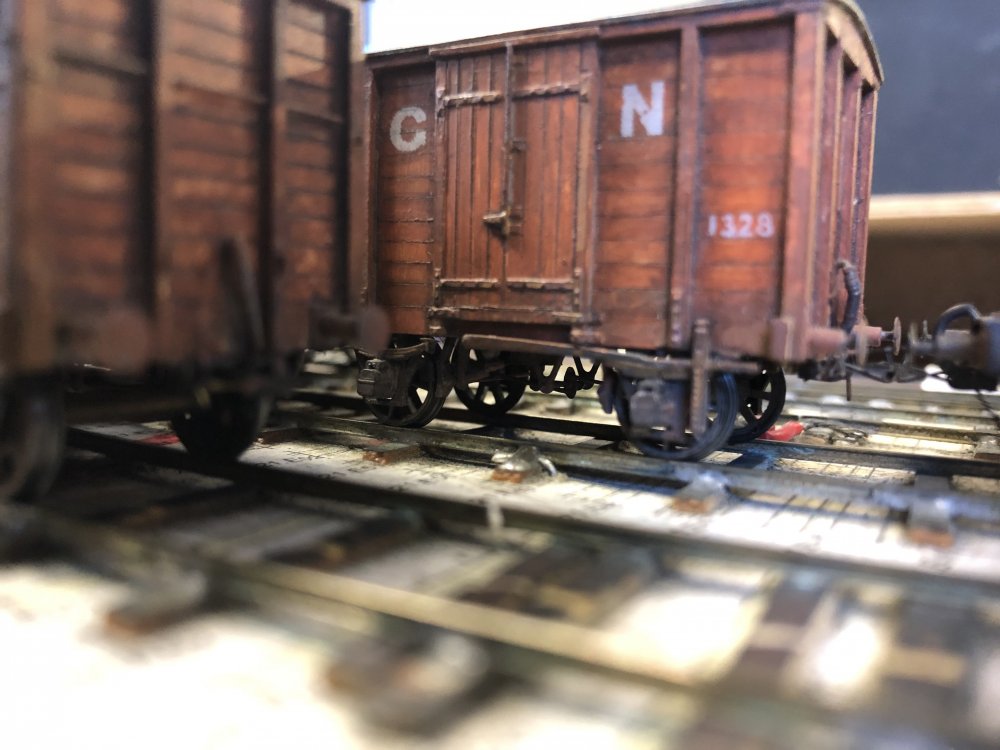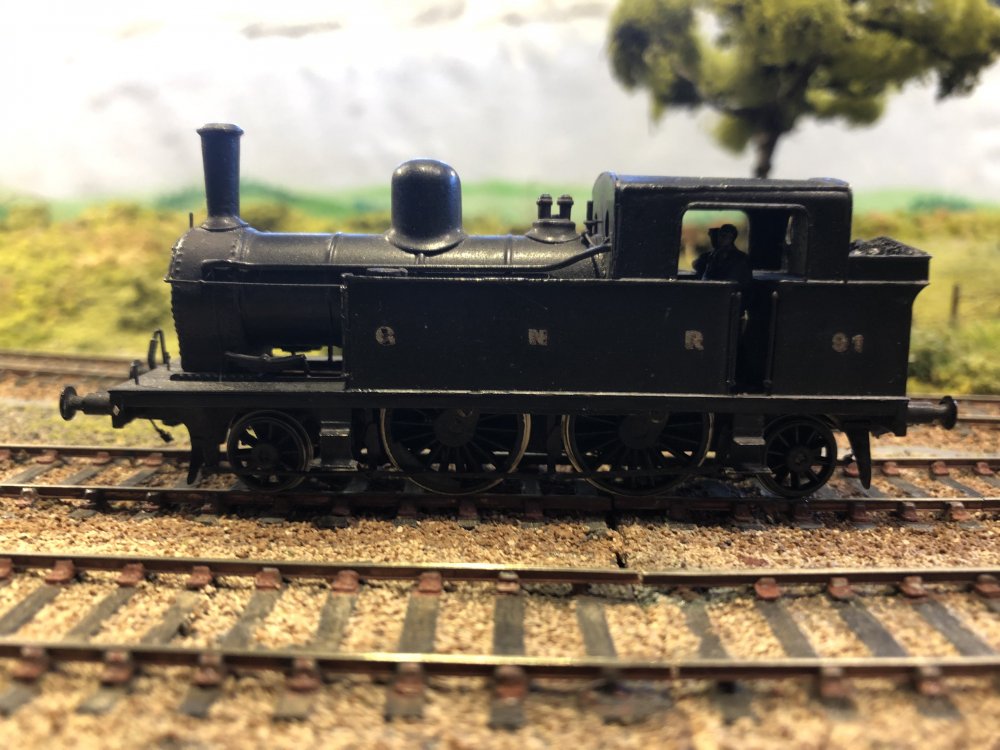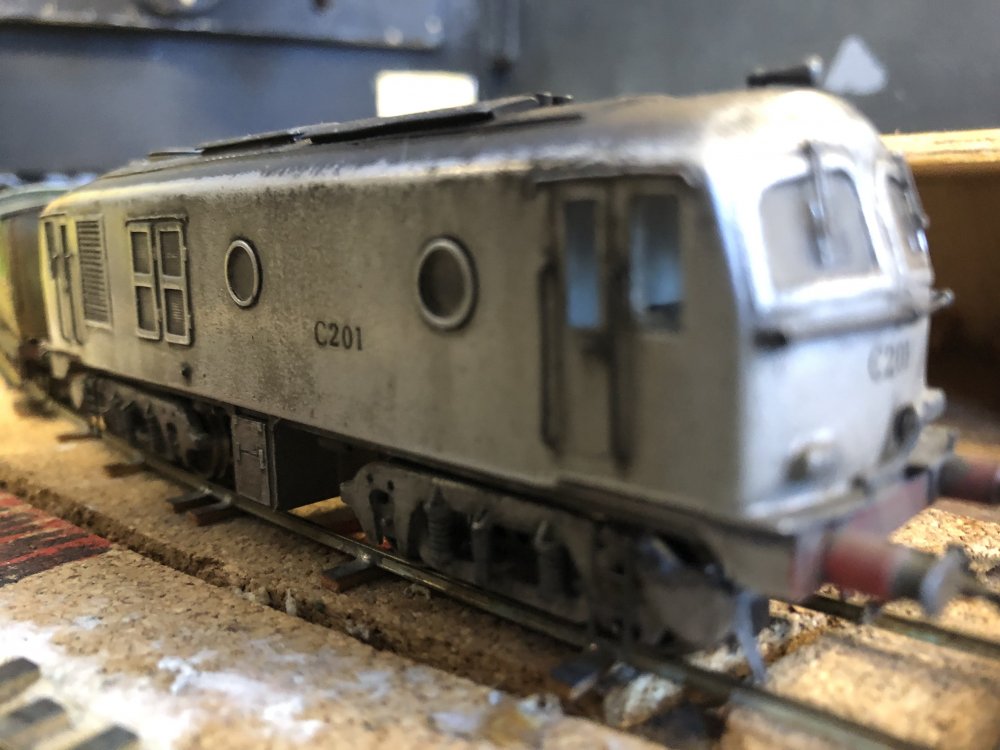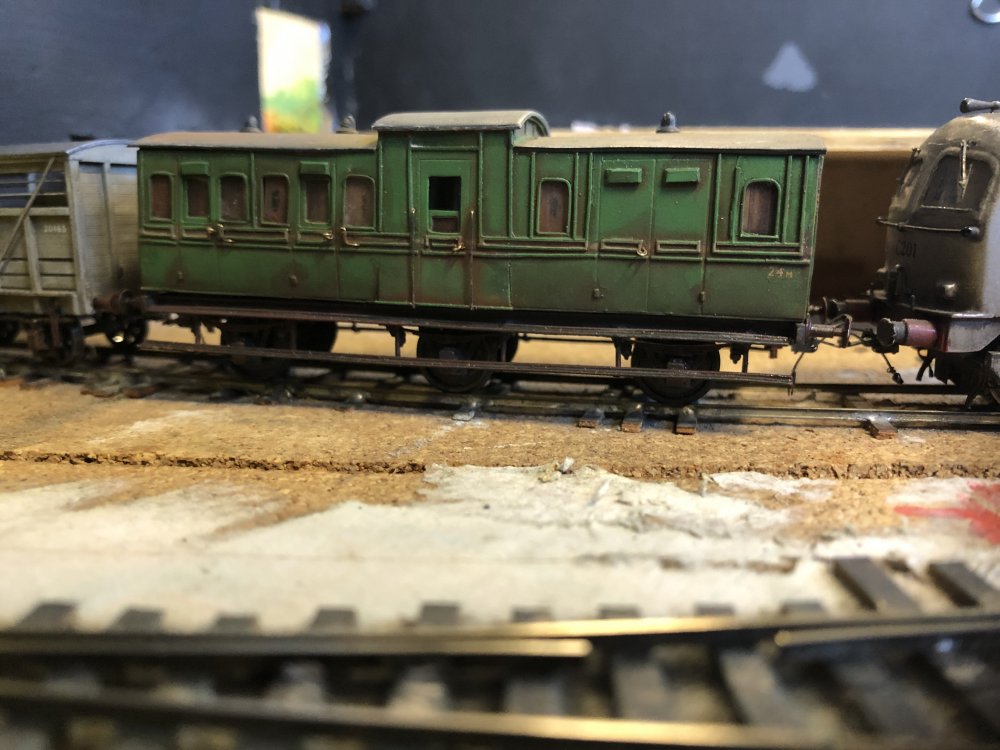-
Posts
15,849 -
Joined
-
Last visited
-
Days Won
393
Content Type
Profiles
Forums
Events
Gallery
Everything posted by jhb171achill
-
I have to say I'm not a fan of this at all.....
-
In THAT case, between Ballysodare and Sligo, 60 with passenger coaches only, was certainly feasible at a pinch.
-
Indeed, Angus, nor do I. On the Ballysodare - Sligo stretch, a modern train, say an AEC railcar, would well do 60 - the track was for for it. But cattle trucks....no, definitely no. Such stock was normally limited to 30mph.
-
Under no circumstances could a SLNCR train have attained 60 miles per hour, or anything close to it. After 1930, the track was in woeful state. jhbSenior inspected it twice or three times in the 1950s in his own time, as he was friendly with the SLNCR Traffic Manager during his time with the GNR in Enniskillen, and the SLNCR couldn't afford to retain their own civil engineer. His thoughts on the track would probably have had a speed limit of 35 mph at most, maybe 40 on a few stretches. The railcar might have done that. Perusal of the timetables then show roughly two hours for Enniskillen to Sligo, or some average 25mph. That would equate to a top running speed of maybe 31-32mph. Apart from this, if anything attained even 45mph, it would have been Railcar "B". The wagons were certainly not fit for anything above 25-30mph. Leslie, your reticence in believing anything about 60mph would be very well founded! Colin Boocock may have been referring to when the line was first opened, but again, not with loose coupled wagons on a line with many, many, short and steep gradients.
-
Which it probably has!
-
All Dave’s work. Scenery to follow! Then..... it’s 1963!
-
The latest; things begin to take shape at Baseboard Dave’s. Hopefully near the end now! And it’ll be 1963 again.....
-
In the long term, there are models available that are not a million miles from NCC prototypes. A little poetic licence and an Isle of Man 2.4.0 in NCC maroon would make a nice sight sitting there... Superb little cameo as is, though!
-
An excellent van. These things are just as appropriate to modelling the early years of the 20th century - an era not often covered - right through GSR days and on through CIE times. The last such beasts were still to be seen into the early 1960s and one or two even managed to make it into the black'n'tan era. They can be used alongside the more modern standard CIE vans. Until closure in 1961, West Cork had some truly venerable vans of various types.
-
The only carriages they never ran with (and just wouldn’t look right with) would be anything air-conditioned - Mk 2 & 3. Laminates of every type, old wooden stock, Bredins, Park Royals and Cravens, certainly.
-
South Dublin Model Railway Exhibition 2019 list of exhibitors
jhb171achill replied to DartStation's topic in What's On?
Saw it.... a bit plain in detail, but I suppose OK for some as it is, to be fair, a limited interest. IGNORE above; it was a remark on an entirely different issue, posted here by mistake! Dohhhhhh -
Exactly! You can run it with Stephenson's Rocket if you want! Actually, several were still kicking about in the 1980s, one out of use at the buffer stops in Heuston where platform 6 is now, and I think another in Inchicore. Two more, of the ex-TPO style, were converted and would see many years more in the weedspraying trains. So, a little poetic licence and away ye go!
-
Yea, they did run with Cravens, but mostly in the 1960s. By 1970 they were relegated to branch lines after the BR vans were introduced, and in the same branch lines laminates and Park Royals were the norm. Even then, however, up to the withdrawal of the last one about 1976, a train of mixed laminates, PRs and Cravens might still see a tin van occasionally.
-
Whether to Weather or Preserve Pristine - Quite the Quandary!
jhb171achill replied to DJ Dangerous's topic in General Chat
I suppose that it’s (a) just a matter of opinion and (b) the degree of realism someone wants on a layout - a whole pristine train is in almost all respects inaccurately untypical, to those seeking 101% realism. The way I see it, for what it’s worth, is this. If I am prepared to spend €130 on getting a loco for a given layout scenario which isn’t too far away from what actually operated, or €190 on an accurate model if same, then it boils down to the fact that when given a choice, I will choose accuracy and be prepared for my wallet to become €60 lighter than another modeller might be happy with. Fine. Then IRM (for example) bring out a new wagon of the type I need. I have three choices: 1. Buy cheap Hornby things that look vaguely reminiscent of what I want. Slap’o’grey paint and yer grand. 2. I sell my car and buy 20 of the IRM ones, as they are outstandingly accurate, and keep them and their boxes as they are. 3. I sell the car, buy the 20 IRMs and weather them within an inch of their lives / because they ALWAYS looked like that in real life. Summary: if I’m prepared to pay well above what I COULD have done, just to get decent accuracy, which I will enjoy operating, then I may well be prepared to accept that by weathering them, I’m dropping resale value. In my case (and please don’t tell Leslie or Garfield, who I’m sure aren’t reading this), all of the outstandingly excellent items of theirs which I’ve purchased, will be weathered to some extent - in the case of wagons, prototypically very heavily! -
Was only in it twice..... bought two Hornby open wagons, all I could afford. Perfect wagons to stick behind....... a Murphy 121!
-
South Dublin Model Railway Exhibition 2019 list of exhibitors
jhb171achill replied to DartStation's topic in What's On?
Couldn’t agree more. Very well done and very many thanks to all concerned. -
I spoke to a former Dundalk Works manager and Senior some years ago, who was friendly with SLNCR management. The very strong probability would have been steam until the mid 60s, then hiring in diesel locos from CIE. It’s likely they’d have bought one or two withdrawn CIE bogies, most likely of ex GSWR designs as they were most sturdy. Had they lasted into the 70s, you’re looking at hired-in CIE diesels and hired-in laminates, possibly one or two ex-UTA coaches of either NCC or GNR origin. CIE wagons would by now be the norm. Into and through the 1980s and 90s, same. Eventually they might buy a couple of cravens and a couple of 141s when these start being withdrawn. A second-hand two-car AEC set might have been a short-term option in the mid 1970s. From 1975 on, probably to today, they’d probably have a G class to shunt their workshop, unless they had outsourced this to Inchicore. Maybe there would be two others there, covered in brambles and off the track, having been bought for spares. If it survived now, I’d be fairly sure they’ve bought the two 2700 “bubble cars” and re-liveried them. Railcar “B” would have seen out the 1970s at least. If the GNR had closed, it would probably now be a line just from Collooney to Manorhamilton.
-
Symphony in orange and black..... superb.
-
South Dublin Model Railway Exhibition 2019 list of exhibitors
jhb171achill replied to DartStation's topic in What's On?
I'm done with the "Aussie views", Noel! -
South Dublin Model Railway Exhibition 2019 list of exhibitors
jhb171achill replied to DartStation's topic in What's On?
More..... IMG_8427.MOV IMG_8426.MOV IMG_8430.MOV IMG_8431.MOV IMG_8434.MOV IMG_8435.MOV IMG_8433.MOV IMG_8436.MOV And more..... IMG_8448.MOV IMG_8450.MOV IMG_8474.MOV IMG_8475.MOV -
South Dublin Model Railway Exhibition 2019 list of exhibitors
jhb171achill replied to DartStation's topic in What's On?
I love the stream full of rocks and bits of logs.....a little scenic cameo. Highlights: absolutely what Leslie describes as “Great Northern-ness”. Ballyconnell Road is absolutely the most accurate layout of any prototype I have ever seen. Everything handmade - EVERYTHING - due to non standard scale. The track looks so realistic too. Working shunt signals..... in basically 3mm scale. Locos, coaches, wagons, everything. Pure and accurate GNR heaven. Welcome, Ballyconnell Road, to Ireland. And of course we had IRM with the unbelievably superb “A” class, and the legend that is Paddy Murphy with his 121. I came away financially a good bit lighter than when I arrived, but money well spent. I’m looking right now at a dozen of Leslie’s cattle trucks, among other things.... And then there’s Eoin’s excellent DARTs! Folks, if you haven’t been, GO!!!! -
South Dublin Model Railway Exhibition 2019 list of exhibitors
jhb171achill replied to DartStation's topic in What's On?
-
Yes, he does. Usually to be found in the archival section (downstairs).
-
More Bubble Fun with Original Slate Grey and Irish Cement Wagons
jhb171achill replied to Warbonnet's topic in News
I’d be fairly sure anything delivered in 1972 was orange new.....? However - one thing is certain. IF the last ones were grey as new, it didn’t last long! -
Tony, that is looking really amazing now - superb work.
.png.c363cdf5c3fb7955cd92a55eb6dbbae0.png)


